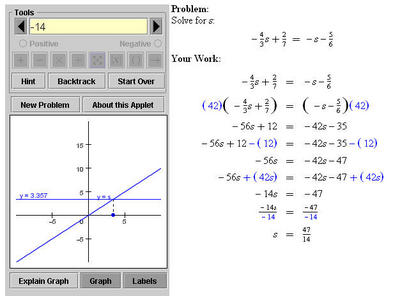- I am trying to calculate 2 + 3 * 5.
- OK.
- Tell me, should I add or multiply first?
- Does it matter?
- Sure it matters!
- How do you know?
- OK. Let me check it out.
- I like this.
- What is it that you like?
- That you are going to check it out.
- If I add first and then multiply I get 25. But if I multiply first and then add I get 17.
- So which one is right?
- They can't both be right?
- Don't be silly!
- OK
- My calculator gives me the answer 25, but my friend's calculator gives 17.
- You know what?
- No.
- In Poland they would write 23+5* or 235*+.
- How much is 23+5*?
- They start from the left. First comes a 2, so they remember that number. Then comes a 3 so they remember that number too.
- They have to remember a lot?
- (Smiles) Yes, but then comes a +, so they add the two numbers they have remembered to get 5. Then comes another 5.
- So now they remember two 5s?
- Which gives 25 when they see the * sign.
- Neat! But what about 235*+?
- Why don't you tell me?
- OK. I'll have a go. They first remember the numbers 2, 3 and 5.
- OK
- Then the * tells them to multiply, but which numbers?
- What do you think?
- The two last ones?
- Right.
- So they get 15.
- And what happens when they see the +?
- They add the two numbers on their mind.
- Which are?
- 2 and 15.
- You are smart! You know that?
- Can I try another one? One that does not give neither 17 nor 25.
- No problem. Try this one: 235+*.
- (Thinking for a while) The + gives me 8, and the * means 2 * 8, so the answer is 16.
- Give me one more.
- Why don't you make up one?
- OK! Let me try 23*5+.
- Go ahead.
- (Very fast) 11.
- Excellent!
- I like this way to calculate!
- Why is that?
- Because I never wonder if I should add or multiply first. As soon as I see a + sign I add the two last numbers, and if I see a * I multiply.
- (Smiling) I am happy for you!
- And one more thing. When I calculate I start from the left reading one thing at a time without worrying about what comes next. What follows does not matter. You know what my father always says?
- No, tell me.
- It his favourite saying. "Let's cross the bridge when we come to it."
- Many calculators and computers convert the expressions to this form before they calculate for that reason. The form is called RPN, or Reverse Polish Notation.
- Did Einstein come up with this system?
- No, his name was Jan Lukasiewicz.
- In the 1920s.
- Tell me. If this system is so wonderful, why is it not used all over the place?
- I don't know. Tradition maybe.
I like talking with you. This Polish things and stuff. It makes me think.
- I am glad you feel like that.
- But you know what? We haven't solved my problem. In 2 + 3 * 5, should I add or multiply first?
- Ah, yes, that one. Where did you get the problem from?
- From the textbook.
- Did it say "Sue ate 2 pancakes in the morning and 3 in the afternoon for 5 days. How many pancakes did she eat in all?"
- Then I would add 2 and 3 before multiplying with 5, but it didn't say that.
- Did it say "Sue ate 2 pancakes on Monday and then 3 pancakes every day for 5 days."
- I get your point! That would mean that I should first multiply 3 and 5 and afterwards add 2. But it said neither. It just said "2 + 3 * 5 = ?"
- The convention is to start with the operations from the left.
- So I should add before I times?
- Well, only if the operations have the same priority.
- Do + and * have the same priority?
- Multiplication has a higher priority.
- So I should times first?
- Yes.
- So the answer is 17.
- Correct.
- So it would be wrong to add first?
- Yes. If you want to add first you would have to add some parenthesis. (2 + 3) * 5.
- So anything inside paranthesis should be calculated first?
- Yep.
- You know what? In Poland they have a much simpler system!























